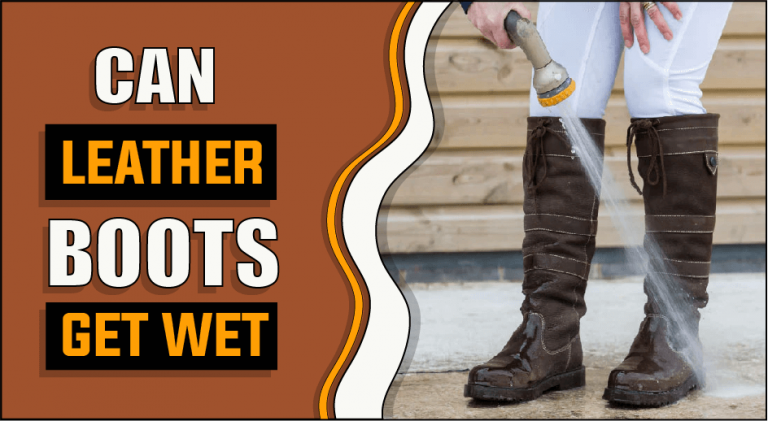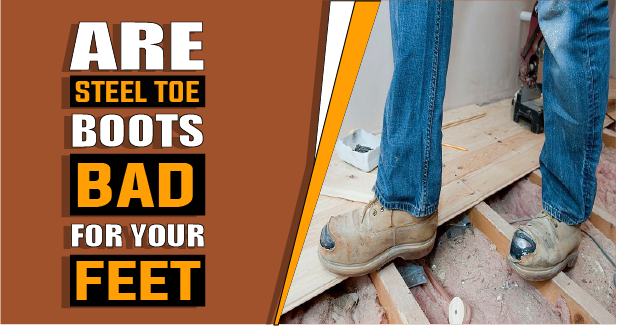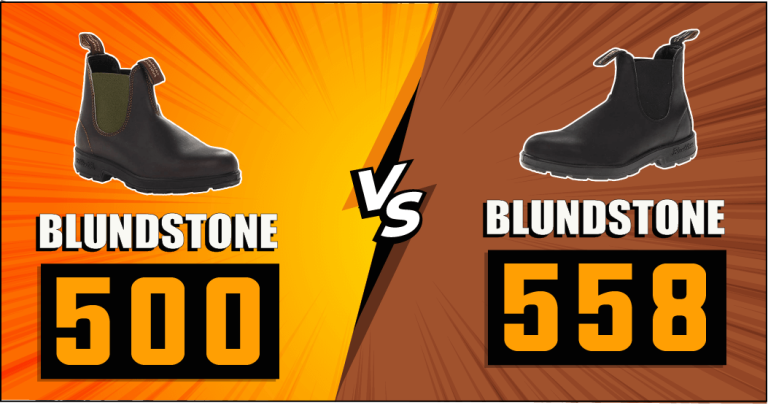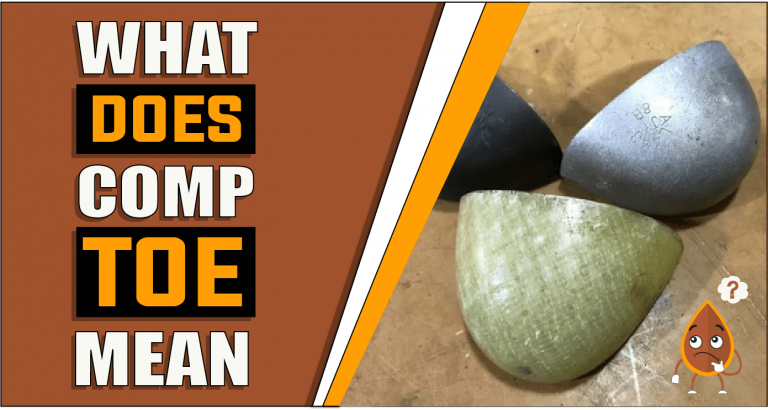How Much Heel Slip Is Normal In Boots – Know Before You Wear
Are you looking for comfortable, stylish boots to wear? Boots can be the perfect footwear for a range of occasions. But since every foot is different, having the right fit and support can often be tricky – including dealing with heel slip. Heel slip occurs when your feet slide around inside the shoe due to poor fitting or overly-flexible material composition. So how much heel slip should you expect in your new boots? In this blog post, we’ll cover what ‘normal’ amounts of heel slipping are, whether it’s something worth worrying about, and various solutions that may help alleviate or even eliminate heel slippage issues! Keep reading to learn more about how much heel slip is normal in boots!

What is heel slip and how much heel slip is normal in boots?
Heel slip is a common problem in footwear that occurs when the heel of the shoe slips out of the back of the shoe and causes discomfort to the wearer. Heel slip occurs when shoes do not fit properly or are too large, resulting in a loose, uncomfortable fit around the ankle. In some cases, heel slip may be caused by a worn-out insole or insufficient cushioning.
How much heel slip is considered normal? Generally, a small amount of heel slip, approximately 1/4 – 1/2 inch, is acceptable in boots and other shoes. Anything more than this can be a sign that the shoe size is too large and may need to be adjusted accordingly.
It is important to note, however, that some styles of footwear are designed differently and may require a larger or smaller heel-to-toe ratio than others. For example, boots with high shafts will often require more heel slip than other styles of shoes because they fit higher up on the ankle. When trying on boots, it is always advisable to try them on with the socks or stockings that will be worn most often. This will ensure the best fit and help minimize heel slip.
If heel slip persists, even after trying different sock/stocking combinations, the shoe size may be incorrect. If this is the case, a different size should be tried on to ensure a more comfortable fit. Additionally, purchasing an extra insole can help reduce heel slip if the particular style of the shoe allows for one to be inserted. If none of these solutions work, it may be necessary to find a different style of shoe.
So normal amount of heel slip is considered acceptable in boots and other shoes. However, if the heel slip is more than 1/4 – 1/2 inch or persists even after trying different sock combinations or insoles, the shoe size may need to be adjusted or a different style of shoe should be considered.
How to prevent heel slip in boots?
Heel slip, or “heel blisters,” is an annoying and painful condition caused by wearing ill-fitting boots. To prevent heel slip in boots, there are a few key tips to follow.
1: Ensure the boots fit correctly.
Make sure that the back of your heel doesn’t slip out when you walk, as this can cause blisters and discomfort. A good test is to put on a pair of socks with the boots and pull down slightly on the heel counter (back portion of the boot). If it slips easily, then it may be too big and you should try a smaller size.
2: Wear the right type of socks.
Try to wear socks that don’t add too much bulk or hug your heel too tightly, as this can cause friction and lead to blisters. Cotton blends or synthetic materials are often a good choice for wicking away moisture and providing cushioning.
3: Use insoles if needed.
Insoles can act as a cushion between your foot and the boot, reducing friction and helping to stop heel slip. There are many different types available, so make sure to choose one that suits your needs.
4: Use an anti-friction product.
Specialty products designed to reduce friction and prevent blisters can be applied to the heel area of your boots for added protection. These usually come in stick or cream form and are readily available at most shoe stores.
5: Secure the laces.
Make sure that your laces are properly tied and that the tongue of your boot is snug against your foot. This will help to prevent your heel from slipping out when you walk.
Following these tips can help to prevent heel slips in boots and keep you comfortable while walking or working. Make sure to try on a few different styles and sizes until you find the perfect fit.
The different types of boots that are prone to heel slip?
Heel slip can be a source of discomfort, especially when it affects your footwear. The good news is that there are steps you can take to reduce the risk of heel slippage in all types of boots.
1: Chelsea boot-
One type of boot prone to heel slip is a Chelsea boot. These ankle-high boots are often constructed with a combination of smooth leather and elastic panels. This design can cause the heel to slide up and down with each step, often resulting in heel slippage. To reduce the risk of slippage in Chelsea boots, it’s important to ensure a snug fit around your calf and ankle.
2: combat boot-
Another type of boot prone to heel slip is a combat boot. Combat boots often feature a thickly padded collar and a wide lacing system that can be adjusted to ensure a snug fit. However, if the laces are too loose or not properly tightened, heel slippage is more likely to occur. To prevent heel slip in combat boots, it’s important to make sure the laces are securely tightened and the collar is properly fitted.
3: Heeled boot-
Lastly, heeled boots are also prone to heel slip. Heels on boots can add height and sophistication, but they can also cause your feet to slide out of the boot with each step. To reduce the risk of heel slippage in heeled boots, it’s important to ensure a snug fit around the ankle and calf and to ensure the heel is securely in place. Additionally, be sure to wear socks that are thick enough to provide cushioning and support for your feet.
By following these tips, you can reduce the risk of heel slippage in all types of boots. With the right fit and proper care, you’ll be able to enjoy comfortable, stylish boots without worrying about heel slippage.
What to do if your boots start slipping?
If your boots start slipping, it can be very uncomfortable and may even lead to injury. There are several things you can do to prevent this from happening.
1: Check the laces or straps:
It is important to make sure that your laces or straps are properly adjusted and tied. Make sure they are snug enough that the boots don’t slip, but not too tight to cause discomfort. They should be tied securely and evenly.
2: Add an inner sole:
If your boots are still slipping, you may want to try adding an inner sole to the shoe. This provides extra cushioning and support which can help keep your feet in place. Make sure to get a good quality inner sole that fits properly inside your boot and won’t slip out.
3: Wear thicker socks:
Thicker socks can provide extra cushioning and support to the feet which helps keep them in place inside the boots. Make sure to get a good pair of thick socks that are comfortable and won’t cause any irritation.
4: Choose the right size boot:
It is important to make sure that you are wearing the right size boot for your feet. If your boots are too small, they will constantly slip off of your feet. Conversely, if your boots are too large, they may also slip around due to the extra room inside of them. Make sure to try on different sizes and pick the one that fits best.
5: Apply a non-slip product:
If all else fails, you may want to try applying a non-slip product inside of the boots. This can help provide extra grip and stability which can prevent your feet from slipping around. Be sure to use a product that is designed for shoes and won’t cause any damage.
Following these steps should help keep your boots in place and provide you with a comfortable fit. However, if the problem persists even after trying all of these solutions, speak to an expert at a shoe store to ensure that you have the right fit.
How to fix a boot with too much heel slip?
Heel slip can be an uncomfortable and annoying issue when wearing boots. Fortunately, fixing heel slips is a fairly easy process that you can complete in just a few steps.
1: Check to make sure the laces are properly tied.
If the laces are too loose, you will experience heel slip. Make sure you’re tying your boots tight enough so that there is no extra slack in the laces when they’re tied.
2: Check your socks.
The type of sock you wear can make a big difference when it comes to heel slip. If you’re wearing low-cut socks, this can cause a lack of support around the ankle and therefore your feet can slip. Consider switching to taller socks that provide more coverage and support around the ankles.
3: Look into purchasing an insole or insert for the boot.
Insoles provide extra cushion and support for the foot, which can help reduce heel slip. Make sure to find an insole that matches the shape of your foot for optimal comfort and fit.
4: Consider investing in a pair of boot trees.
Boot trees are wooden or plastic structures that fit inside boots and hold them upright to help keep the shape and structure intact. They also provide extra cushioning, which can help prevent heel slip.
5: Make sure your boots fit properly.
A heel slip could be a sign that your boots are too large or small. Make sure the heel fits snugly, but not so tight that it’s uncomfortable.
By following these tips, you can help reduce heel slip and make sure your boots fit comfortably. With the right tools and techniques, you can enjoy a comfortable and secure fit in any pair of boots.
Relevant Questions:
Heel slippage is a common issue that can occur in any type of shoe, including boots. This is often caused by an improper fit, inadequate arch support, or insufficient cushioning. To prevent heel slippage, you should make sure your boots are the right size and shape for your foot and that they provide adequate arch support and cushioning. Additionally, you can use heel liners and insoles to help secure the back of your foot in place. With the right fit and support, you should be able to avoid any issues with heel slippage.
The amount of heel movement in a boot is not uniform across all styles and designs. Generally, you want there to be some slight room at the back of your heel so that it can move up and down as you walk. It should not feel tight or uncomfortable, nor should your foot slide around excessively when walking. The best way to determine if there is enough heel movement in a boot is to try it on. If you feel comfortable, that’s an indicator that the fit and amount of heel movement are just right for your particular needs. Always be sure to check the return policy before purchasing so that you can exchange or return it if needed.
Heel slip is a common occurrence for many people when wearing shoes. Generally, a small degree of heel slip (around 2-4 mm) is normal and can be beneficial as it helps to absorb shock. However, more than this should be avoided as excessive slipping in the heel area may lead to discomfort and potential injury over time. Furthermore, if you experience heel slip in a new pair of shoes, it may be helpful to try different sizes or widths until you find the shoe that fits correctly. Ultimately, your shoes should feel comfortable and secure on your feet without excessive slipping.
It is normal to have a certain degree of heel slip in work boots, although it should not be too significant. Ideally, you should experience a small amount of heel slip when walking, which is necessary for comfort and stability. If the heel slips too much, it could lead to blisters or other foot-related issues. Additionally, if your work boots are too tight, they can cause your toes to become cramped and uncomfortable.
Conclusion Paragraph
We hope you enjoyed this article discussing how much heel slip is normal in boots. Heel slip can be a frustrating problem when trying to break in new boots, but by following the tips above you should be able to minimize it and get on your way to enjoying comfortable shoes that last. While a certain amount of heel slip is normal in boots, too much can be cause for concern. If you’re experiencing heel slip that affects your ability to wear or walk in your boots, it’s important to consult with a professional. They can help you determine whether the issue is with the boot itself or if there may be another underlying problem. In any case, addressing the issue sooner rather than later will help ensure that you get the most out of your boots and avoid any potential problems down the road.
Ella John created BootsSolution.com with the vision of helping people to find the perfect boots for any occasion. As an expert in the field of footwear, she has created a comprehensive guide to finding the perfect boots. With her BA (Hons) in Footwear Design from De Montfort University, UK, Ella John has been writing about boots for several years. On BootsSolution.com you can find helpful information about the latest trends, tips for taking care of your boots, and advice on how to choose the right pair. Ella’s mission is to provide her readers with the best possible advice and help make sure that everyone can look their best in a perfect pair of boots. So if you’re looking for the information and inspiration you need to find the perfect boots, look no further than BootsSolution.com.






